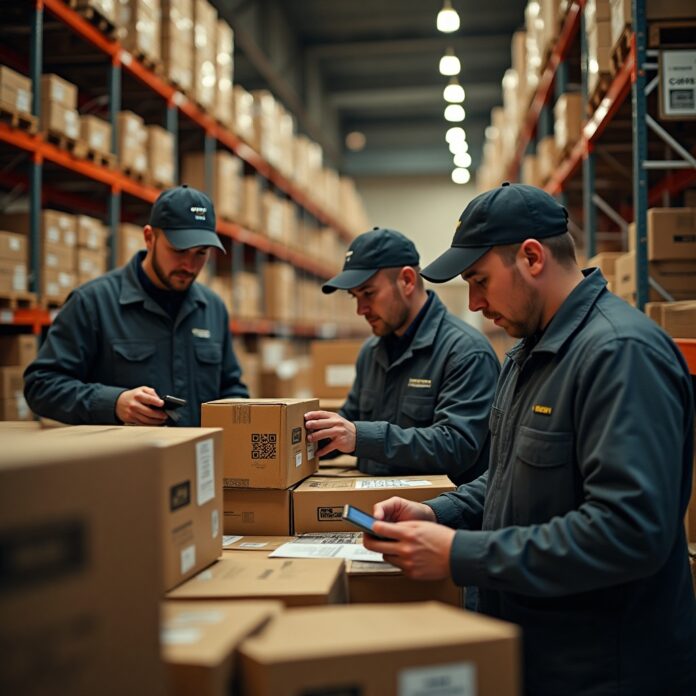Let’s start with a truth bomb: the auto spare parts industry is a high-speed highway, but navigating it feels more like dodging potholes. By 2025, this market will hit $1.9 trillion—yes, trillion with a T. But here’s the catch: B2B buyers like you—mechanics, retailers, wholesalers—are stuck juggling tariffs that change like the weather, counterfeit parts that threaten your reputation, and customers who demand loyalty but rarely return it.
This article isn’t a generic checklist. Think of it as your co-pilot. We’re tackling three real pain points:
- Customs headaches (why paperwork feels like a part-time job).
- Counterfeit landmines (how to spot fakes before they blow up your business).
- Customer loyalty (because repeat buyers aren’t born—they’re made).
Let’s shift gears.
Navigating Customs Clearance in 2025
A. Tariffs & Trade Policies: The 2025 Rulebook
Picture this: You order 500 alternators, only to learn tariffs ate 25% of your profit overnight. Under Section 232, critical parts like engines and transmissions now face a 25% import tax. But there’s a loophole: USMCA. If 75% of a part’s content is from the U.S., Canada, or Mexico, you dodge the tariff. Miss that mark? Penalties stack up faster than rush-hour traffic.
And here’s the kicker: The $800 duty-free threshold? It’s on thin ice. Lawmakers want it slashed, meaning even small shipments could cost you.
B. Documentation: Your Survival Kit
Forget “I’ll figure it out later.” The EPA wants Form 3520-1 for anything emissions-related (think catalytic converters). The DOT demands HS-7 forms for safety parts (brakes, tires). Miss one, and your shipment stalls like a flooded engine.
Pro tip: Use Harmonized Tariff Schedule (HTS) codes religiously. Misclassify a fuel pump? You’ll overpay duties—or face audits.
State-level rules? Oh, they play hardball. In California, Colorado, and 12 other states, CARB regulations mean even a tiny emissions part needs certification. Ignore this, and your parts collect dust in a warehouse.
C. Logistics: Dodge the Hidden Costs
Customs brokers aren’t a luxury—they’re your airbag. A good broker preps paperwork, predicts delays, and negotiates fees. But budget beyond the obvious: Anti-counterfeit verification (we’ll get to that), storage fees if shipments stall, and “gotcha” taxes like merchandise processing fees (MPF).
Bottom line: Treat customs like a pit stop—plan every detail, or risk blowing your budget.
Combatting Counterfeit Auto Parts
A. Spotting Fakes: Trust No Box
Counterfeits aren’t just cheap knockoffs. They’re liability lawsuits waiting to happen. Red flags:
- Pricing that’s too good: Brake pads priced 50% below market rate? They’ll fail faster than a caffeine crash.
- Missing marks: No OEM logos, vague packaging (“Made for Toyota” instead of “By Toyota”), or typos.
- Too available: Rare parts suddenly in stock? Suspect.
Verify with blockchain trackers (yes, like crypto for car parts). Companies like AutoTrust tag genuine parts with digital IDs you can scan. For critical components—airbags, electrical systems—third-party labs like Intertek test durability.
B. Vet Suppliers Like a Detective
Alibaba’s a minefield. Stick to vetted platforms:
- Keystone Automotive: Zero MOQs, real-time inventory for retailers.
- Turn14: Wholesale pricing with API integration for eCommerce.
Demand audits. Surprise video calls to factories, sample testing, and ISO/IATF certifications. If a supplier hesitates, walk.
C. Legal Armor
Selling a counterfeit alternator? You’re liable for engine failures—or worse. Protect yourself:
- IP clauses in contracts: Suppliers guarantee parts don’t infringe patents.
- Product liability insurance: Covers lawsuits if a fake slips through.
Building a Loyal B2B Customer Base
A. Pricing: Play Chess, Not Checkers
Static pricing is dead. Use AI tools like Pricefx to adjust in real-time. Example: If tariffs spike alternator costs, nudge prices up 5%—but bundle them with free shipping to soften the blow.
Reward loyalty: Offer 10% off orders over $10K, or early access to high-demand parts (e.g., EV batteries).
B. Customer Experience: Be Their Swiss Army Knife
Mechanics hate returns. Fix this: Add a Year/Make/Model search tool to your site. Offer fitment guarantees—if a part doesn’t fit, you cover return shipping.
Educate them: Host 20-minute webinars on “2025 Tariff Hacks” or “Spotting Fake Turbochargers.” Record and repurpose clips into TikTok tutorials.
C. Loyalty Programs: Beyond Punch Cards
B2B buyers want exclusivity, not keychains. Try:
- Volume rebates: Hit $50K in annual orders? Refund 3%.
- Predictive restocking: Use their purchase history to auto-suggest orders. (“Your clients buy 200 Honda filters monthly—restock now?”)
Ask for feedback—then act on it. A Midwest wholesaler revamped their catalog after clients begged for more EV parts. Sales jumped 18%.
Case Studies & Actionable Takeaways
- Midwest Wholesaler vs. Counterfeits:
- Problem: 30% of brake pads were fake.
- Fix: Blockchain tracking + random lab tests.
- Result: 40% fewer returns, supplier lawsuits dropped.
- eCommerce Retailer’s Loyalty Win:
- Tactic: Tiered discounts + monthly “parts mastery” webinars.
- Result: 25% repeat buyers, 12% higher average order value.
Your Checklist:
- Audit 3 suppliers this quarter.
- Add a fitment guarantee to your site.
- Host one webinar on 2025 tariffs.
Let’s park here: The auto parts game in 2025 is about agility. Tariffs will shift, fakes will evolve, and customers will flirt with competitors. But with the right systems—bulletproof suppliers, airtight compliance, and loyalty built on trust—you’ll outpace the chaos.
Now, go rev that engine. Your next loyal customer is waiting.


